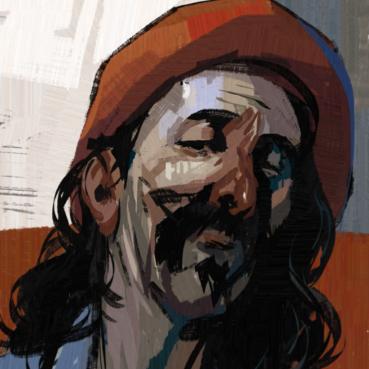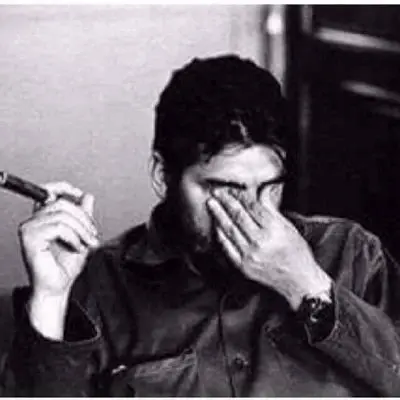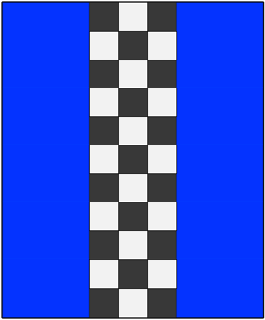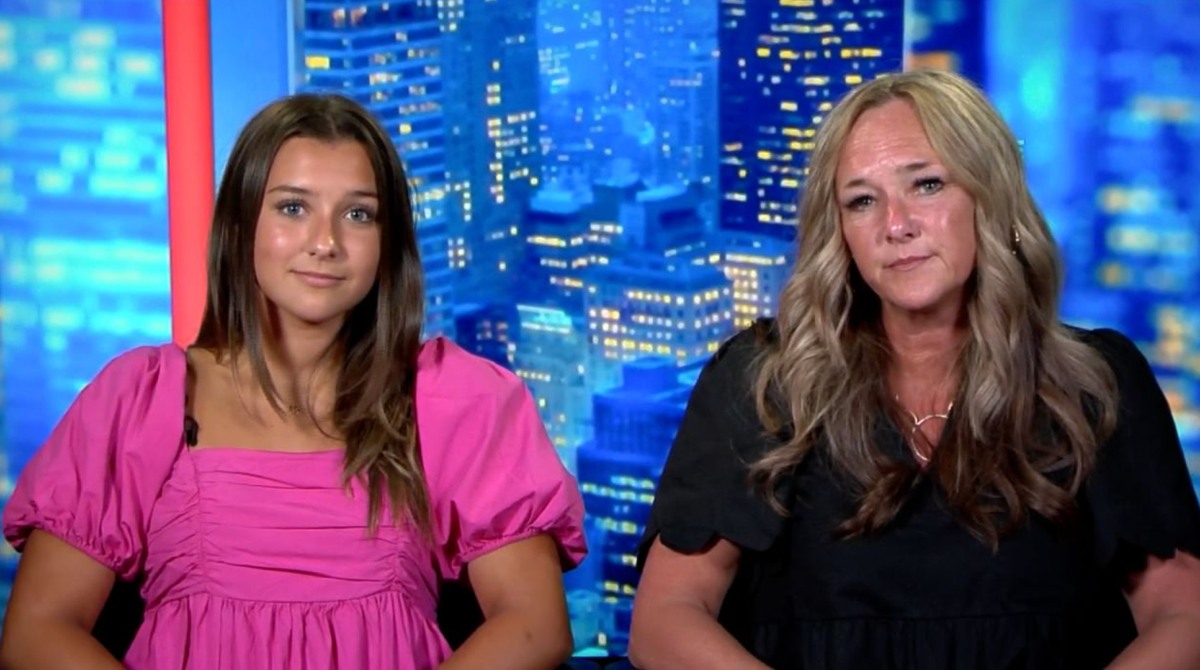
“This kid who is not getting any kind of real consequence other than a little bit of probation, and then when he’s 18, his record will be expunged, and he’ll go on with life, and no one will ever really know what happened,” McAdams told CNN.
“If [this law] had been in place at that point, those pictures would have been taken down within 48 hours, and he could be looking at three years in jail…so he would get a punishment for what he actually did,” McAdams told CNN.
There’s a reason kids are tried as kids and their records are expunged when they become adults. Undoing that will just ruin lives without lessening occurrences.
“It’s still so scary as these images are off Snapchat, but that does not mean that they are not on students’ phones, and every day I’ve had to live with the fear of these photos getting brought up resurfacing,” Berry said. “By this bill getting passed, I will no longer have to live in fear knowing that whoever does bring these images up will be punished.”
This week, Republican Senator Ted Cruz, Democratic Senator Amy Klobuchar and several colleagues co-sponsored a bill that would require social media companies to take down deep-fake pornography within two days of getting a report.
“[The bill] puts a legal obligation on the big tech companies to take it down, to remove the images when the victim or the victim’s family asks for it,” Cruz said. “Elliston’s Mom went to Snapchat over and over and over again, and Snapchat just said, ‘Go jump in a lake.’ They just ignored them for eight months.”
BS
It’s been possible for decades for people to share embarrassing pictures of you, real or fake, on the internet. Deep fake technology is only really necessary for video.
Real or fake pornography including unwilling participants (revenge porn) is already illegal and already taken down, and because the girl is underage it’s extra illegal.
Besides the legal aspect, the content described in the article, which may be an exaggeration of the actual content, is clearly in violation of Snapchat’s rules and would have been taken down:
- We prohibit any activity that involves sexual exploitation or abuse of a minor, including sharing child sexual exploitation or abuse imagery, grooming, or sexual extortion (sextortion), or the sexualization of children. We report all identified instances of child sexual exploitation to authorities, including attempts to engage in such conduct. Never post, save, send, forward, distribute, or ask for nude or sexually explicit content involving anyone under the age of 18 (this includes sending or saving such images of yourself).
- We prohibit promoting, distributing, or sharing pornographic content, as well as commercial activities that relate to pornography or sexual interactions (whether online or offline).
- We prohibit bullying or harassment of any kind. This extends to all forms of sexual harassment, including sending unwanted sexually explicit, suggestive, or nude images to other users. If someone blocks you, you may not contact them from another Snapchat account.



I apologize for the innappropriate behavior and bans by @TheAnonymouseJoker@lemmy.ml in this thread, I’ve removed them as a mod here, banned them, and unbanned the ppl who they innappropriately banned.
Note: if they get unbanned in the near future, its because of our consensus procedure which requires us admins to take a vote.

Appreciate it.

Odd that there is no mention of the parents contacting the police and working through them to get the images down Technically and legally the photos would be considered child porn Since it’s over the Internet it would bring Federal charges even though there maybe State charges Somethings were handled wrong if all the kid is getting is probation

photos
They aren’t photos. They’re photorealistic drawings done by computer algorithms. This might seem like a tiny quibble to many, but as far as I can tell it is the crux of the entire issue.
There isn’t any actual private information about the girls being disclosed. The algorithms, for example, do not and could not know about and produce an unseen birthmark, mole, tattoo, piercing, etc. A photograph would have that information. What is being shown is an approxomation of what similar looking girls in the training set look like, with the girls’ faces stiched on top. That is categorically different than something like revenge porn which is purely private information specific to the individual.
I’m sure it doesn’t feel all that different to the girls in the pics, or to the boys looking at it for that matter. There is some degree of harm here without question. But we must tread lightly because there is real danger in categorizing algorithmic guesswork as reliable which many authoritarian types are desperate to do.
https://www.wired.com/story/parabon-nanolabs-dna-face-models-police-facial-recognition/
This is the other side of the same coin. We cannot start treating the output of neural networks as facts. These are error prone black-boxes and that fact must be driven hard into the consciousness of every living person.
For some, I’m sure purely unrelated reason, I feel like reading Phillip K Dick again…

They aren’t photos. They’re photorealistic drawings done by computer algorithms. This might seem like a tiny quibble to many, but as far as I can tell it is the crux of the entire issue.
most phone cameras alter the original image with AI shit now, it’s really common, they apply all kinds of weird correction to make it look better. Plus if it’s social media there’s probably a filter somewhere in there. At what point does this become the ship of thesseus?
my point here, is that if we’re arguing that AI images are semantically, not photos, than most photos on the internet including people would also arguably, not be photos to some degree.

The difference is that a manipulated photo starts with a photo. It actually contains recorded information about the subject. Deepfakes do not contain any recorded information about the subject unless that subject is also in the training set.
Yes it is semantics, it’s the reason why we have different words for photography and drawing and they are not interchangeable.

The deepfakes would contain the prompt image provided by the creator. They did not create a whole new approximation of their face as the entire pool it can pull on for that specific part is a single or group of images provided by the prompter.

yeah idk why they said that, it’s objectively wrong.

Deepfakes do not contain any recorded information about the subject unless that subject is also in the training set.
this is explicitly, untrue, they literally do. You are just factually wrong about this. While it may not be in the training data, how do you think it manages to replace the face of someone in one picture, with the face of someone else in some other video.
Do you think it just magically guesses? No, it literally uses a real picture of someone. In fact, back in the day with ganimation and early deepfake software, you literally had to train these AIs on pictures of the person you wanted it to do a faceswap on. Remember all those singing deepfakes that were super popular back a couple of years ago? Yep, those literally trained on real pictures.
Regardless, you are still ignoring my point. My question here was how do we consider AI content to be “not photo” but consider photos manipulated numerous times, through numerous different processes, which are quite literally, not the original photo, and a literal “photo” to rephrase it simpler for you, and other readers. “why is ai generated content not considered to be a photo, when a heavily altered photo of something that vaugely resembles it’s original photo in most aspects, is considered to be a photo”
You seem to have missed the entire point of my question entirely. And simply said something wrong instead.
Yes it is semantics
no, it’s not, this is a ship of thesseus premise here. The semantics results in how we contextualize and conceptualize things into word form. The problem is not semantics (they are just used to convey the problem at hand), the problem is a philosophical conundrum that has existed for thousands of years.
in fact, if we’re going by semantics here, technically photograph is rather broad as it literally just defines itself as “something in likeness of” though it defines it as taken by method of photography. We could arguably remove that part of it, and simply use it to refer to something that is a likeness of something else. And we see this is contextual usage of words, a “photographic” copy is often used to describe something that is similar enough to something else, that in terms of a photograph, they appear to be the same thing.
Think about scanning a paper document, that would be a photographic copy of some physical item. While it is literally taken via means of photography. In a contextual and semantic sense, it just refers to the fact that the digital copy is photographically equivalent to the physical copy.

Oh FFS, I clipped the word new. Of course it uses information in the prompt. That’s trivial. No one cares about it returning the information that was given to it in the prompt. Nevertheless, mea culpa. You got me.
this is a ship of thesseus premise here
No, it really isn’t.
The pupose of that paradox is that you unambiguously are recreating/replacing the ship exactly as you already know it is. The reason the ‘ai’ in question here is even being used is that it isn’t doing that. It’s giving you back much more than it was given.
The comparison would be if Thesues’ ship had been lost and you definitely don’t have the ship anymore, but had managed to recover the sail. If you take the sail to an experienced builder (the ai) who had never seen the ship, then he might be able to build a reasonable approximation based on inferences from the sail and his wealth of knowledge, but nobody is going to be daft enough to assert it is same ship. Does the wheel even have the same number of spokes? Does it have the same number of oars? The same weight of anchor?
The only way you could even tell if his attempted fascimile was close is if you had already intimate knowledge of the ship from some other source.
…when a heavily altered photo of something that vaugely resembles it’s original photo in most aspects, is considered to be a photo”
Disagree.

No, it really isn’t.
i would consider it such, you said as much in your original post that the entire crux of the issue is the semantics between a real photograph, as physically taken by the camera, and what could be considered an image, whatever that constitutes, for purposes of semantical arguments here, let’s say digitally drawn art, clip art, whatever doesn’t matter. It’s objectively not a photo, and that’s what matters here.
The pupose of that paradox is that you unambiguously are recreating/replacing the ship exactly as you already know it is. The reason the ‘ai’ in question here is even being used is that it isn’t doing that. It’s giving you back much more than it was given.
Yeah so the reason why the thought experiment does this is because it creates an incredibly sterile environment which allows us to easily study and research the question at hand. In this case it’s to boil it down to something as physically close to “objective relation” and “symbolic relation” I.E. the two extremes of the thought experiment at hand. It’s still not easy to define what the true answer to the question is, and that’s why it’s incredibly sterile.
The comparison would be if Thesues’ ship had been lost and you definitely don’t have the ship anymore, but had managed to recover the sail. If you take the sail to an experienced builder (the ai) who had never seen the ship, then he might be able to build a reasonable approximation based on inferences from the sail and his wealth of knowledge, but nobody is going to be daft enough to assert it is same ship. Does the wheel even have the same number of spokes? Does it have the same number of oars? The same weight of anchor?
this is not what i was making my statement about. If you read my original comment you might pickup on this one.
Disagree.
yes ok, and this is what my thought experiment comparison was about in this case. The specific thing i was asking you was how we define a photo, and how we define an image, because what would normally be constituted as a photo, could arguably be considered to be an image on account of the various levels of image manipulation taking place.
While rather nitpicky in essence i suppose, the point i’m making here was that your entire statement might be upended entirely based on the fact that the original photo used, may not even be a photo at all, making the entire distinction entirely redundant to begin with. Since you never defined what counts as a “photo” and what counts as an “image” there is no clear distinction between that, other than the assumed AI image manipulation that you talked about. Which like i said, most phones do.
In short, i don’t think it’s a very good way of conceptualizing the fundamental problem here because it’s rather loose in it’s requirements. If you wanted to argue that the resulting imagery simply is not akin to actual real imagery (in a literal sense), i see no reason to disagree. However, unfortunately the general populous does not care about the semantic definition of whether or not an image is a photo or not. So as far as most people are concerned, it’s either “deep faked” or “real” There is no alternative.
Legally, since we’d be talking about revenge porn and CP here, i don’t see a reason to differentiate between the semantics, because as far as the law is concerned, and as far as most of the general public is concerned. Someone deep faking revenge porn is arguably, still just revenge porn. While AI generated CP may not be real CP, marrying a 12 year old is legal in some places, it’d still be fucking weird if you did it. If you are creating AI CP, that’s pretty fucking weird, and there isn’t exactly a good argument for doing that. (ignoring the one obvious counter example)

Whether or not you consider them photos, DOJ considers them child porn and you will still go to jail.

Technically and legally the photos would be considered child porn
I don’t think that has been tested in court. It would be a reasonable legal argument to say that the image isn’t a photo of anyone. It doesn’t depict reality, so it can’t depict anyone.
I think at best you can argue it’s a form of photo manipulation, and the intent is to create a false impression about someone. A form of image based libel, but I don’t think that’s currently a legal concept. It’s also a concept where you would have to protect works of fiction otherwise you’ve just made the visual effects industry illegal if you’re not careful.
In fact, that raises an interesting simily. We do not allow animals to be abused, but we allow images of animal abuse in films as long as they are faked. We allow images of human physical abuse as long as they are faked. Children are often in horror films, and creating the images we see is very strictly managed so that the child actor is not exposed to anything that could distress them. The resulting “works of art” are not under such limitations as far as I’m aware.
What’s the line here? Parental consent? I think that could lead to some very concerning outcomes. We all know abusive parents exist.
I say all of this, not because I want to defend anyone, but because I think we’re about to set some really bad legal precidents if we’re not careful. Ones that will potentially do a lot of harm. Personally, I don’t think the concept of any image, or any other piece of data, being illegal holds water. Police people’s actions, not data.

I don’t think that has been tested in court.
It has and it continues to be.
- https://www.fbi.gov/news/stories/charlotte-child-sexual-abuse-material-case-shows-unsettling-reach-of-ai-generated-imagery
- https://www.ic3.gov/Media/Y2024/PSA240329
- https://www.fd.org/news/doj-charges-man-producing-and-possessing-ai-generated-child-pornography
And even if it hadn’t, that’s no excuse not to start.
It would be a reasonable legal argument to say that the image isn’t a photo of anyone. It doesn’t depict reality, so it can’t depict anyone.
It depicts a real child and was distributed intentionally because of who it depicts. Find me then legal definition of pornography that demands that pornography be a “depiction of reality”. Where do you draw the line with such a qualifier?
I think at best you can argue it’s a form of photo manipulation, and the intent is to create a false impression about someone.
It is by definition “photo manipulation”, but the intent is to sexually exploit a child against her will. If you want to argue that this counts as a legal form of free speech (as libel is, FYI), you can fuck right on off with that.
A form of image based libel, but I don’t think that’s currently a legal concept.
Maybe actually know something about the law before you do all this “thinking”.
It’s also a concept where you would have to protect works of fiction otherwise you’ve just made the visual effects industry illegal if you’re not careful.
Oh no, not the sLiPpErY sLoPe!!!
We do not allow animals to be abused, but we allow images of animal abuse in films as long as they are faked.
Little girls are the same as animals, excellent take. /s
Children are often in horror films, and creating the images we see is very strictly managed so that the child actor is not exposed to anything that could distress them.
What kind of horror films are you watching that has naked children in sexual situations?
What’s the line here?
Don’t sexually exploit children.
Parental consent?
What the living fuck? Parental consent to make porn of their kids? This is insane.
I say all of this, not because I want to defend anyone, but because I think we’re about to set some really bad legal precidents if we’re not careful.
The bad legal precedent of banning the creation and distribution of child pornography depicting identifiable minors?
Personally, I don’t think the concept of any image, or any other piece of data, being illegal holds water.
Somebody check this guy’s hard drive…

Is it CSAM if it was produced by AI?

In this case, yes. Visually indistinguishable from a photo is considered CSAM. We don’t need any new laws about AI to get these assholes. Revenge porn laws and federal CSAM statutes will do.

It should be considered illegal if it was used to harm/sexually abuse a child which in this case it was.
Whether it should be classed as CSAM or something separate, I tend to think probably something separate as a revenge porn type law that still allows for distinguishing between this and say a girl whose uncle groomed and sexually abused her while filming it as while this is awful it can (and often does seem) be the product of foolish youth rather than the offender and those involved all being very sick, dangerous, and actually violent offending adult pedophiles victimizing children.
Consider the following:
-
Underage girl takes a picture of her own genitals, unfortunately classified as the unhelpful and harmful term “child porn” and she can be charged and registered as a sex offender but it’s not CSAM and -shouldn’t- be considered illegal material or a crime (though it is because the west has a vile fixation on puritanism which hurts survivors of childhood sexual trauma as well as adults).
-
Underage girl takes a picture of her genitals and sends it to her boyfriend, again /shouldn’t/ be CSAM (unfortunately may be charged similarly), she consented and we can assume there wasn’t any unreasonable level of coercion. What it is unfortunately is bound by certain notions of puritanism that are very American.
-
From 2, boyfriend shares it with other boys, now it’s potentially CSAM or at the least revenge porn of a child as she didn’t consent and it could be used to harm her but punishment has to be modulated with the fact the offender is likely a child himself and not fully able to comprehend his actions.
-
Underage boy cuts out photo of underage girl he likes, only her face and head, glues it atop a picture of a naked porn actress, maybe a petite one and uses it for his own purposes in private. Not something I think should be classed as CSAM.
-
Underage boy uses AI to do the same as above but more believably, again I think it’s kind of creepy but if he keeps it to himself and doesn’t show anyone or spread it around it’s just youthful weirdness though really he probably shouldn’t have easy access to those tools.
-
Underage boy uses AI to do same as 4-5 but this time he spread it around, defaming the girl, she/her friends find out, people say mean things about her, she has to go to school with a bunch of people who are looking and pleasuring themselves to fake but realistic images of herself against her consent which is violating and makes one feel unsafe. Worse probably being bullied for it, mean things, called the s-word, etc.
Kids are weird and do dumb things though unfortunately boys especially in our culture have a propensity to do things that hurt girls far more than the inverse to the point it’s not even really worth talking about girls being creepy or sexually abusive towards peer-aged boys in adolescence and young adulthood. To address this though you need to address patriarchy and misogyny on a cultural level, teach boys empathy and respect for girls and women and frankly do away with all this abusive pornography that’s super prevalent and popular which encourages and perpetuates abusive actions and mentalities towards women and girls, this will never happen in the US however because it’s structurally opposed to being able to do such a thing. Also couldn’t hurt to peel back the stigma and shame around sexuality and nudity in the US which stems from its reactionary Christian culture but again I don’t think that will ever happen in the US as it exists, not this century anyways.
Obviously not getting into adults here as that doesn’t need to be discussed, it’s wrong plain and simple.
Bottom line I think is companies need to be strongly compelled to quickly remove revenge-porn type stuff (regardless of the age of the victim though children can’t deal with this kind of thing as well as adults so the risk of suicide or other self-harm is much higher so it should be treated as higher priority) which this definitely is. It’s abusive and unacceptable and they should fear the credit card companies coming down on them hard and destroying them if they don’t aggressively remove it and ban it and report those sharing it. It should be driven off the clear-web once reported, there should be an image-hash data-set like that used for CSAM (but separate) for such things and major services should use it to stop the spread.
-

i believe in the US for all intents and purposes, it is, especially if it was sourced from a minor, because you don’t really have an argument against that one.

Is it material that sexually abuses a child?

it would be material of and or containing child sexual abuse in it.

Is that the definition of CSAM?

Is it material that may encourage people to sexually abuse a child?

That’s one definition, sure.
Now answer the very simple question I asked about whether or not child porn is abusive.

why do i get the gut feeling that this is going to be an utter clusterfuck of a mess.
Hopefully i’m wrong.

society has become so used to girls and women being considered less that there is a scary amount of rationalization as to why its fine actually to completely annihilate all remaining bodily autonomy they have left. this is an explosion in suicides of young girls and adult women alike begging to happen. wake the fuck up.

wtf why this comment have 7 downvotes
- BigMacHole ( @BigMacHole@lemm.ee ) 6•3 months ago
Wears the It’s Always Sunny In Philadelphia picture when you need it?
-Republicans trying to
ProtectSavedo SOMETHING with Children! This is the best summary I could come up with:
The teen’s phone was flooded with calls and texts telling her that someone had shared fake nude images of her on Snapchat and other social media platforms.
Berry, now 15, is calling on lawmakers to write criminal penalties into law for perpetrators to protect future victims of deepfake images.
“This kid who is not getting any kind of real consequence other than a little bit of probation, and then when he’s 18, his record will be expunged, and he’ll go on with life, and no one will ever really know what happened,” McAdams told CNN.
The mom and daughter say legislation is essential to protecting future victims, and could have meant more serious consequences for the classmate who shared the deep-fakes.
“If [this law] had been in place at that point, those pictures would have been taken down within 48 hours, and he could be looking at three years in jail…so he would get a punishment for what he actually did,” McAdams told CNN.
“It’s still so scary as these images are off Snapchat, but that does not mean that they are not on students’ phones, and every day I’ve had to live with the fear of these photos getting brought up resurfacing,” Berry said.
The original article contains 585 words, the summary contains 205 words. Saved 65%. I’m a bot and I’m open source!



